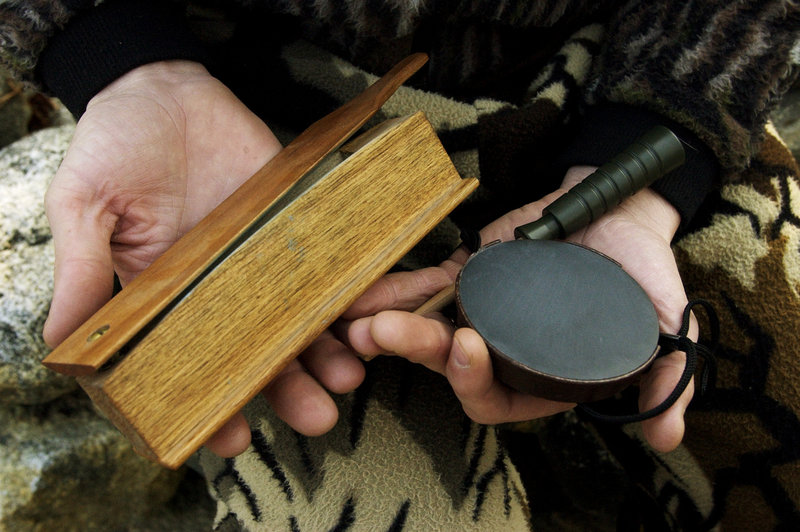Tomorrow marks the start of another spring turkey season in Maine. With winter lingering so long, it sort of snuck up on a lot of us this year.
There’s still time left — not much — but enough to go through your checklist and make sure all of the essentials are ready.
Let’s start with something so obvious it’s often taken for granted. In addition to a general hunting license, you also need a spring/fall turkey permit, and if you plan on taking a second bird, a second spring turkey permit.
You can get them online or at major outdoor retailers. Before you go running out the door though, let’s go through the rest of our list.
WEAPONRY
You will need a gun and ammo (or bow and arrows). Pretty hard to forget your gun, at least if you’re hunting from home (I once drove four hours to western Massachusetts before realizing I’d left my cased shotgun in my other vehicle).
What about shells? Do you have turkey loads, and if so, do you remember where you put them after last season?
Don’t wait until tomorrow morning to look for them.
When was the last time you fired your turkey gun? If it was last spring, you should seriously consider taking a few shots at the range to pattern your gun and make sure it’s still on target.
A few minutes here could mean the difference between a short and a very long season.
IN-VEST-MENT
A camo vest is every bit as important to the turkey hunter as an orange one is to a deer hunter, perhaps more so.
In addition to being the diagnostic characteristic of an experienced turkey hunter, it is also the primary means of conveyance for most of his or her paraphernalia.
I usually carry anywhere from two to six diaphragms. If you intend to re-use last year’s mouth calls, you’d be wise to take them out and soak them in a solution of antiseptic mouthwash and water.
I also carry two slate calls. One is synthetic — glass or metal — that will work in the rain. The other is authentic slate, because to my ear, nothing rings like a real slate.
In either case, the surfaces should be roughed-up with a piece of fine-grit sandpaper or scrub pad in preparation for hunting. And don’t forget your strikers.
Somewhat the same is true for the box call. Make sure the surfaces are lightly sanded, then coated with chalk. And make sure you have sandpaper and chalk stowed somewhere in your vest for periodic reconditioning.
There’s a laundry list of other potential items you may want to include in your vest:
• You should never venture afield without a compass.
• You may want a sharp knife, or better, a multi-tool.
• You’ll need a flashlight — with fresh batteries. And toilet tissue.
• Do you have a crow, woodpecker or other locator call? How about decoys? If you use them, make sure you have all the stakes and other various parts.
• If you have a ThermaCELL, you won’t want to be without it; if you don’t, give serious consideration to bringing one. This little device — roughly the size of a standard telephone receiver — is the most effective mosquito repellent I’ve encountered.
Comfort is important, but remaining motionless is key to the turkey hunter, and a ThermaCELL can go a long way toward that end.
WHAT TO WEAR?
Now on to your apparel. Is it clean? Does it still fit? Does it need mending?
The turkey woods are full of briars and barbed wire, and the three-corner tear is a common campaign badge for turkey hunting veterans.
Two of the more important wardrobe components are gloves and a face mask. For the former, make sure you have both. Then throw an extra pair in your vest, just in case.
Carrying an extra mask is not a bad idea either, considering it is among the most often forgotten or lost items.
That about covers the basic requirements. Beyond this there’s almost no end to the list of options and creature comforts you could bring. A bottle of water and a half-dozen bite-size Snickers bars might help keep you afield longer.
With a small digital camera you can take hero shots in the field, the best place to shoot them. And last but most certainly not least, you should bring along someone to take those pictures, or to take pictures of.
Sharing the experience more than doubles the pleasure.
Bob Humphrey is a freelance writer and registered Maine Guide who lives in Pownal. He can be contacted at: bhhunt@maine.rr.com
Copy the Story Link
Send questions/comments to the editors.



Success. Please wait for the page to reload. If the page does not reload within 5 seconds, please refresh the page.
Enter your email and password to access comments.
Hi, to comment on stories you must . This profile is in addition to your subscription and website login.
Already have a commenting profile? .
Invalid username/password.
Please check your email to confirm and complete your registration.
Only subscribers are eligible to post comments. Please subscribe or login first for digital access. Here’s why.
Use the form below to reset your password. When you've submitted your account email, we will send an email with a reset code.